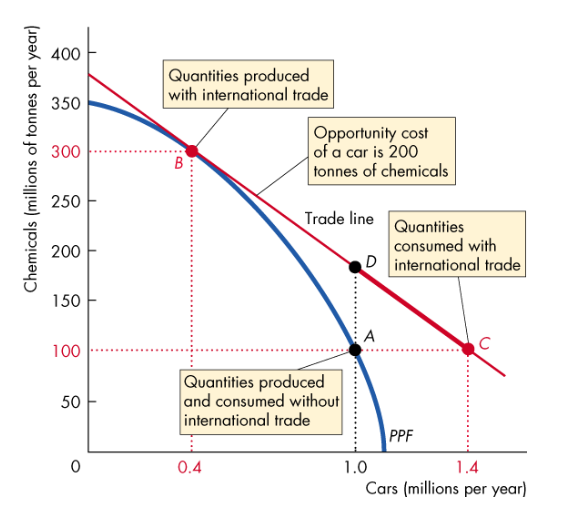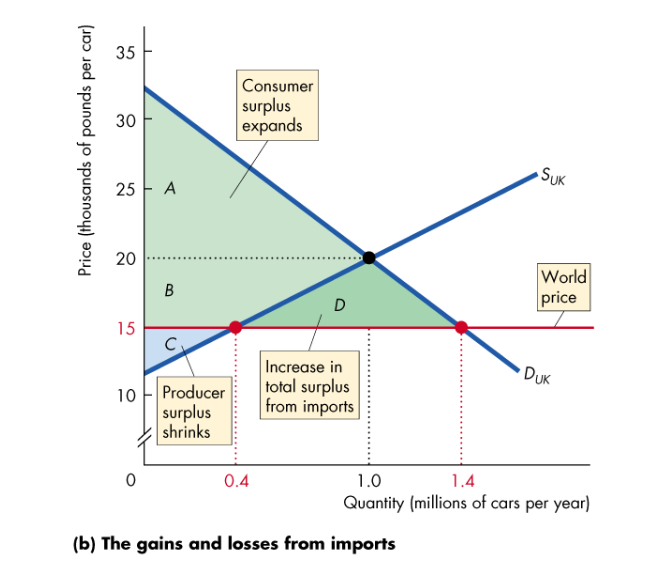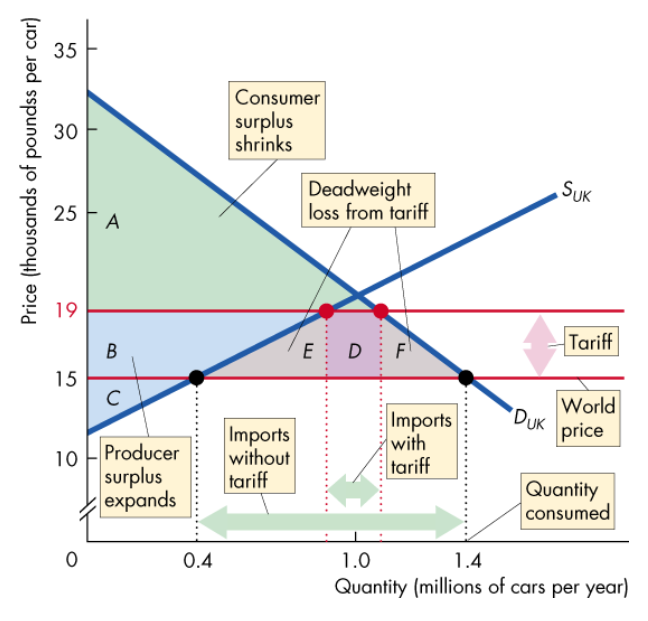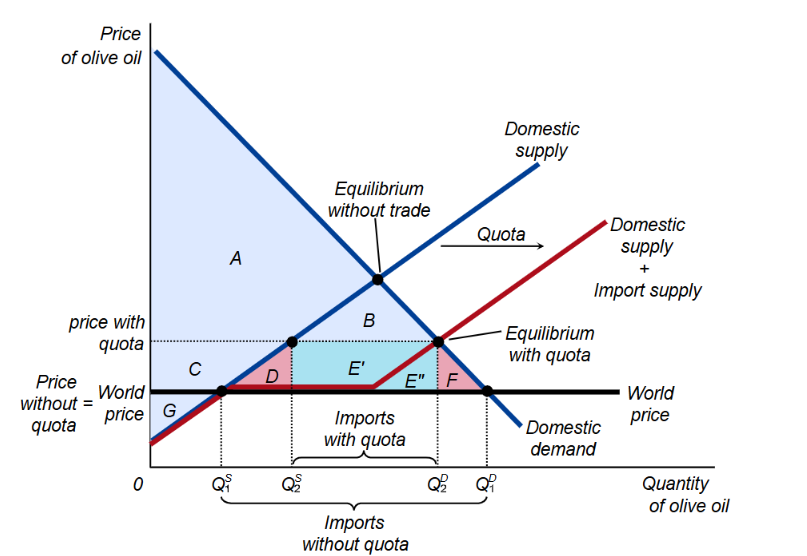International Trade and Finance
1/14
There's no tags or description
Looks like no tags are added yet.
Name | Mastery | Learn | Test | Matching | Spaced |
|---|
No study sessions yet.
15 Terms
Why do countries trade?
Divergent opportunity costs, where countries can focus resources on G+S they have a comparative advantage on, such that they can increase production and GDP
When does a country have a comparative advantage over another country?
When they can produce a good at a lower opportunity cost than any other country
How does international trade create gains for countries?
It’s Cheaper to buy than to produce
E.g. if the rest of the world buys UK chemicals, which is has a CA on, then countries can decrease their production of chemicals, move along their PPF, and be able to buy more chemicals for the same number of cars
Note: UK can now consume at any point along the trade line

What are some other advantages of international trade?
Permits exploitation of economies of scale, supporting small countries who may not have a large enough domestic market
Increases choice, through the proliferation of differentiated products
Promotes competition by breaking down local monopolies
Leaning by doing decreases costs due to the large scale of production
Who are the winners and losers of international trade for an importing country
Price decreases after trade
Consumers gain as the pay less and buy more, increasing CS
Producers lose as the receive less, produce less and have a smaller PS
Consumers’ gain exceeds producers’ loss, so total surplus increases

Who are the winners and losers of international trade for an exporting country?
Price increases after trade
Producers gain as they receive a higher price, produce more and receive a larger PS
Consumers lose as they pay more and buy less, decreasing CS
Gain in PS exceeds loss in CS, so total surplus increases
What is a tariff, and how does it work?
Tax imposed by the importing country when an imported good crosses int’l boundaries
By imposing a tariff, it increases producer surplus whilst decreasing consumer surplus, reducing imports but creating a DWL in the process

What is a quota, and how does it work?
It’s a limit of the quantity of a good that can be imported
By putting a limit on imports, it shifts the domestic supply curve right, meaning new equilibrium is at a higher quantity and lower price, increasing CS and decreasing PS, but imposing a DWL in the process

What are the arguments for protectionist policies?
National security argument
Infant-industry argument (e.g. post WW2 Japan)
Saves jobs
What are the arguments against protectionist policies?
Consumers pay higher prices
Resources moved from an efficient to inefficient use
Can’t export if we don’t import
Protection could invite retaliation
What is the Balance of Payments, Credit and Debit?
Balance of Payments = Record of a country’s transactions (Trading, borrowing and lending) with the rest of the world
Credit = Payments by foreigners
Debit = Payments to foreigners
What is a current account, and what does it include?
It records transactions in G+S
Includes:
Payments for imports
Receipts for exports
Net interest paid abroad
Net transfers
Current account balance = X - M + Net interest income + Net Transfers
When is the current account in deficit or surplus, and what must it do to rectify it?
Deficit when X - M < 0
Must borrow from foreigners or sell assets
Surplus when X - M > 0
Must make loans to foreigners or buy some of their assets
What does the capital account show, and what happens when a country is a net borrower/lender?
Capital account = S - I (Net capital outflow)
Net borrower (S<I):
Capital inflow needed: Purchase of domestic assets by foreigners
Net lender (S>I):
Capital outflow needed: UK purchases foreign assets
What is a key condition of the balance of payments, and what must be done in order to maintain this state?
BOP must always balance
Sum of current and capital accounts must always equal zero
Any difference needs to be compensated by a change in foreign currency reserve holdings
Countries with current account surplus acquire foreign assets
Countries with current account deficit sell assets